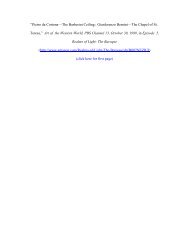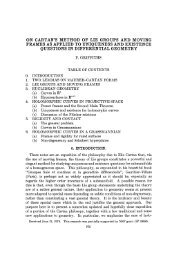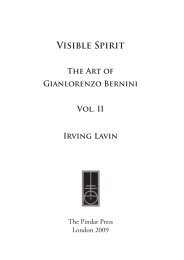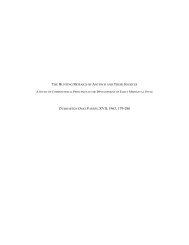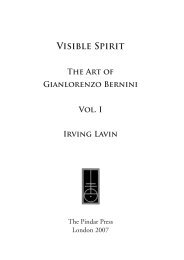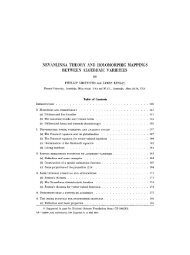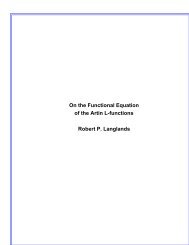View PDF - Project Euclid
View PDF - Project Euclid
View PDF - Project Euclid
You also want an ePaper? Increase the reach of your titles
YUMPU automatically turns print PDFs into web optimized ePapers that Google loves.
CURVATURE AND COMPLEX SINGULARITIES 483<br />
We will first show that under the decomposition (4.23),<br />
(4.24) (AV (R) AIT) @ (A"-W (R) A"-).<br />
To verify this apply the automorphism z* pz to CN. The Maurer-Cartan<br />
forms , (de,, e) and volume form on G(N- k, N) are preserved, while<br />
(dz*, e,) po,. From (4.20) we ier that<br />
which implies<br />
On the other hand, if , p,,<br />
from which we conclude that $ $,, thus establishing (4.24).<br />
In terms of a frame {0; e, ., eN} lying over the fixed point and using the<br />
index range (4.19), $ is a sum of terms<br />
where P is a homogeneous polynomial of degree k and Q is one of degree n k.<br />
When the frame undergoes a rotation<br />
for unitary matrices g and h,<br />
e ge, e, h,e<br />
From the theory of unitary invariants it follows that is expressible in terms<br />
of the quantities<br />
(4.25)<br />
co A o A 8 A , and<br />
Of course we would like to show that is a constant multiple of (61 + 62) k A<br />
det 1", which would prove (4.21). To establish (4.22) we observe that modulo<br />
the differential ideal # {co,, dco,} the list (4.25) reduces to the quantities.




